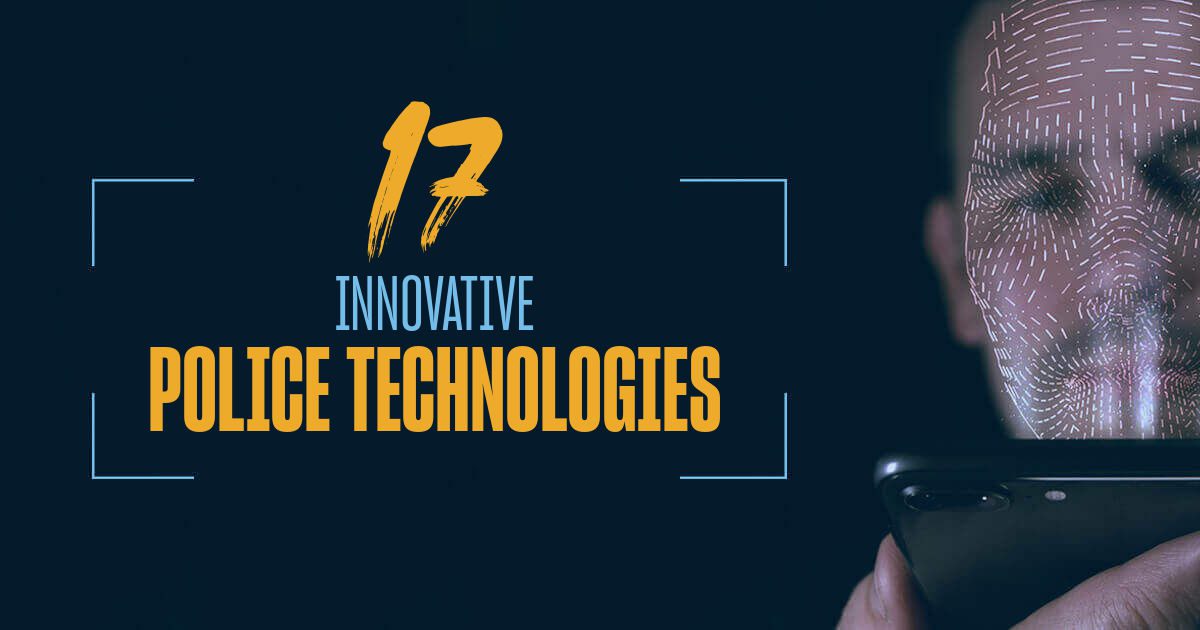Law enforcement officials across the world are increasingly relying on advanced technology to solve crimes, with numerous sophisticated tools now used by police departments. DNA sequencing machines help police collect and analyse samples much faster, more cost-effectively and accurately. Automated licence plate readers scan vehicles and detect stolen or suspected cars linked to crimes, while GPS technology enables real-time, accurate tracking of suspects and missing persons. Thermal imaging cameras can identify heat sources, as well as help detect illegal activities. Meanwhile, facial recognition software matches suspects’ faces to a database of known criminals, drones provide surveillance and body cameras offer valuable evidence in criminal cases.
10 High-Tech Tools Used By the Police in Crime-Solving
In today’s world, the technology has made its mark in every walk of life – and the police force is no different. With the advancement of technology, police forces have access to some of the most sophisticated tools to help in their crime-fighting efforts and solve cases that were once unsolvable.
Here are 10 high-tech tools used by the police in crime-solving:
1. DNA Sequencer
One of the most significant breakthroughs in forensic science has been the development of DNA sequencing technology. With the help of DNA sequencers, the police can now collect and analyze DNA samples faster, more accurately, and cost-effectively than ever before. DNA databases also allow police to match DNA evidence collected at a crime scene to a known suspect or convict.
2. GPS Tracking
GPS, or Global Positioning System, technology allows police to track suspects, vehicles, and even stolen property in real-time with pinpoint accuracy. This tool has helped the police in locating missing persons, stolen vehicles, or monitoring the movement of suspects without arousing suspicion.
3. Automated License Plate Readers
The use of Automated License Plate Readers (ALPRs) has become more common amongst police departments. These cameras are attached to police vehicles or stationary positions, and they scan passing license plates, verifying if they are stolen or linked to any crimes. The technology aids in detecting suspects, their vehicles and tracks their movements, assisting the police in solving crimes quickly.
4. Thermal Imaging Cameras
Thermal imaging cameras make use of infrared waves to detect heat sources. Police officers utilize this technology to track suspects and detect illegal activities, such as thermal imaging cameras mounted on helicopters, that can track down suspects from the air. It can also detect heat sources such as a pot farm, which can be helpful in preventing drug trafficking.
5. Forensic Software
Police have access to forensic software that can recover deleted data from computers, cellphones, or even hard drives. The software scans through the files to retrieve any hidden or deleted data that may prove to be valuable in solving a criminal case.
6. Facial Recognition Technology
Facial recognition technology is becoming widely used by police departments worldwide. It can analyze an image or video to match a suspect’s face to a database of known criminals. Facial recognition software can also read emotions and facial expressions to determine if individuals in a crowd appear suspicious or nervous.
7. Drones
Drones have come a long way in recent years and are now being equipped with high-definition cameras that can zoom in on subjects from a distance. Police commonly use drones for surveillance purposes, whether following a suspect or providing an aerial view of a crime scene for evidence collection.
8. Smart Guns
Smart Guns are equipped with biometric technology that only allows authorized users to activate the firearm. This technology provides better control over the use of firearms, protecting law enforcement officers and the public by ensuring that the only authorized personnel can use them.
9. Ballistic Shields
Ballistic shields were once heavy, bulky, and not easily transportable. However, they have recently undergone major improvements in both technology and design. Ballistic shields now provide police officers with a portable, lightweight solution to protect them during volatile situations.
10. Body Cameras
Body-worn cameras are amongst the most controversial police technology tools. They are often used in high-intensity situations to help document police interactions and ensure that police officers are conducting themselves according to protocol. Body cameras also provide valuable evidence in criminal cases.
Conclusion
The use of high-tech tools by police has helped to enhance their effectiveness in solving crimes and bringing criminals to justice. As the technology continues to evolve, the police force will continue to find innovative ways to use it for the betterment of society.
